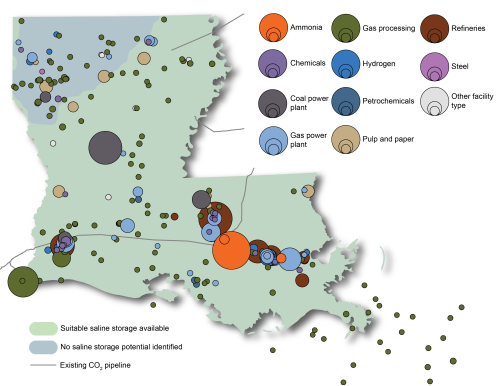Louisiana Carbon Capture Opportunities

Louisiana is an emerging hub of carbon management deployment working within the regional Gulf Coast context. In the state, there are 324 facilities that qualify for the 45Q tax credit, ranging from various power generation sources, refineries, and more industrial sectors. The emissions from these 320 facilities represent an estimated 99.7 percent of all the emissions from facilities in the state. Louisiana recognizes the potential that carbon management presents to curb these emissions while strengthening the state’s economic base. As such, Louisiana has enacted policies to further deployment in the state and applied for Class VI primacy from the Environmental Protection Agency.

Industrial Facilities that Qualify for the Tax Credit in Louisiana
The Regional Carbon Capture Deployment Initiative has identified industrial and power facilities large enough to qualify for the 45Q carbon capture tax credit. The points on the map show the location of these eligible facilities and their size is relative to their amount of annual CO2 emissions. Existing pipelines in the state are also shown.


